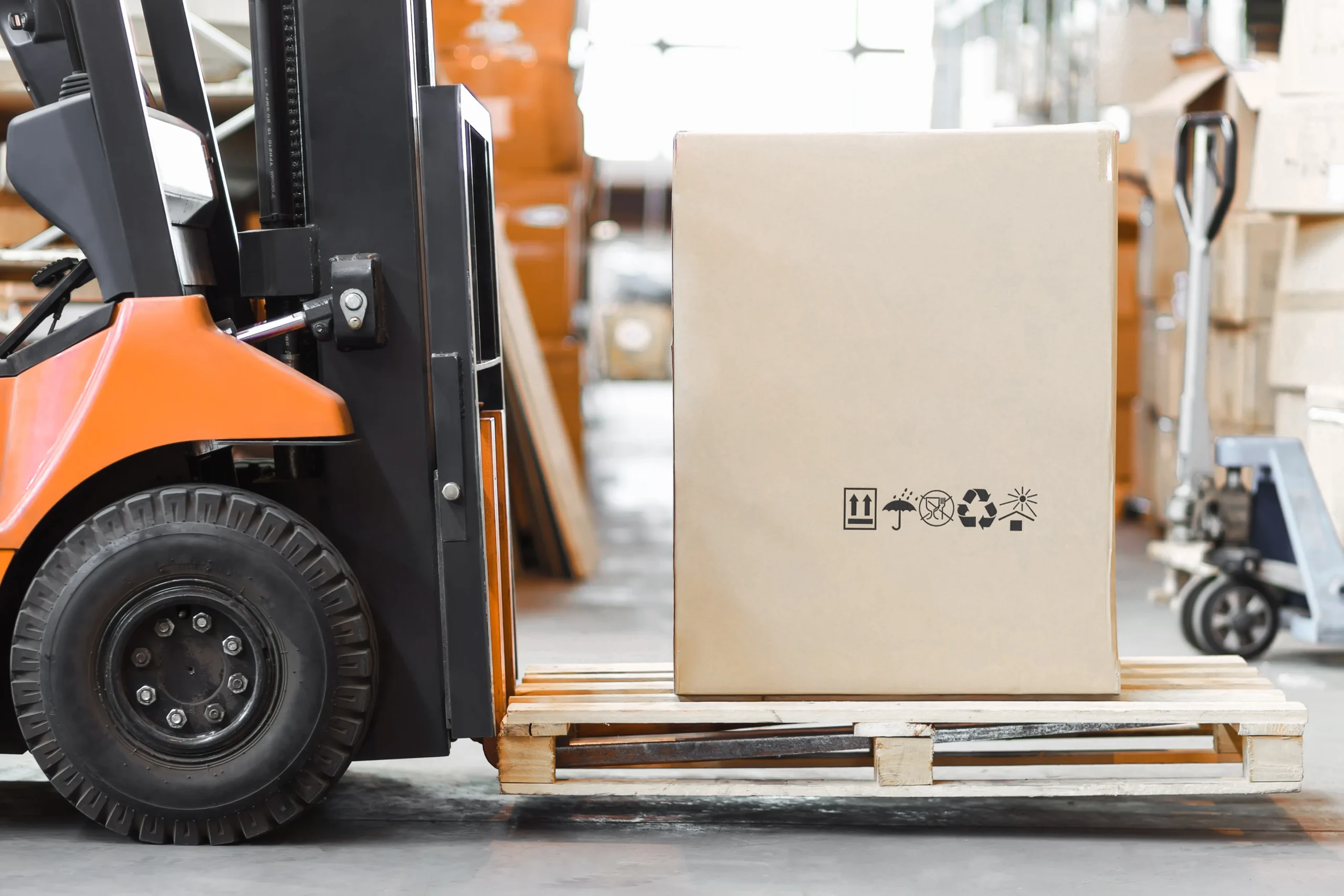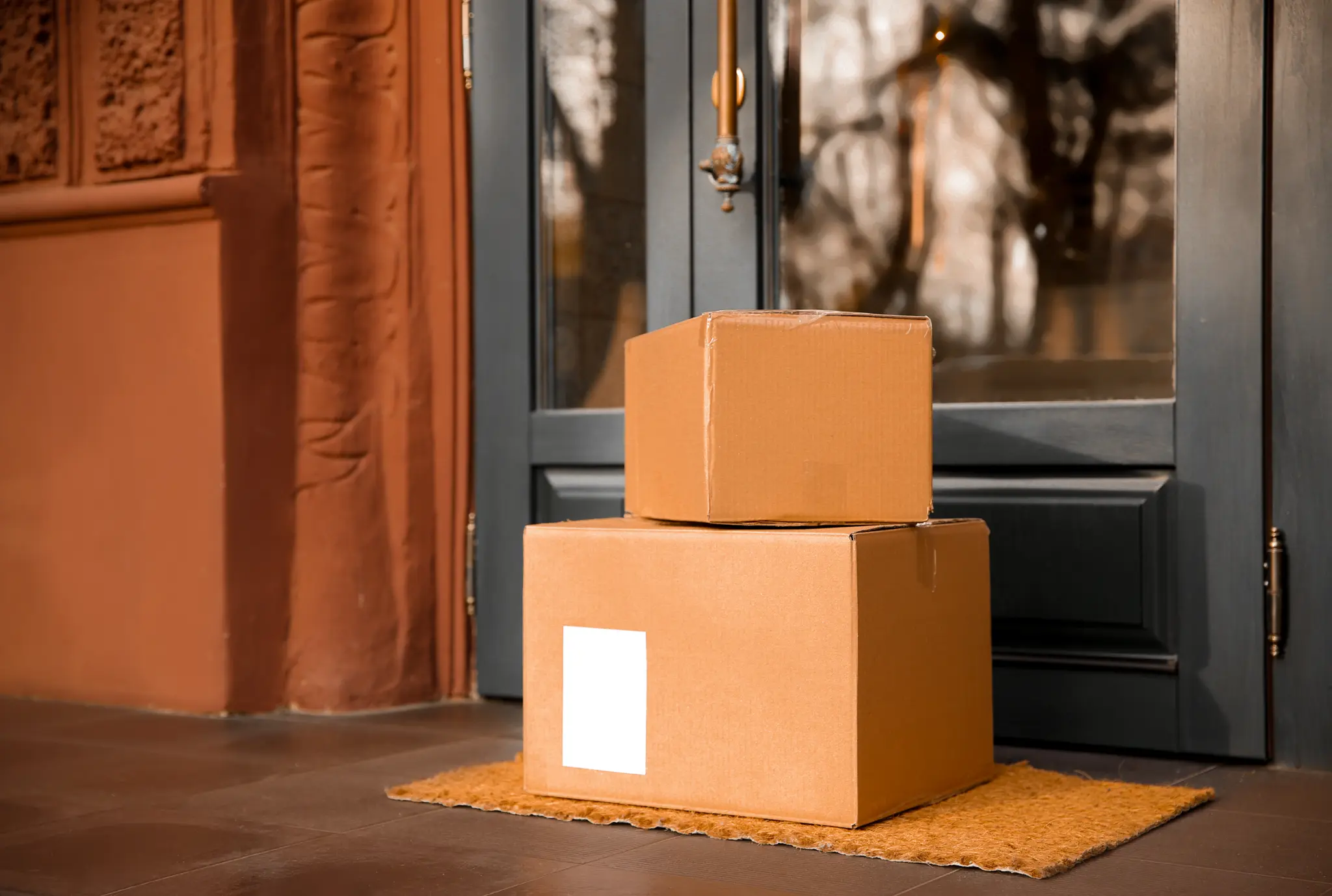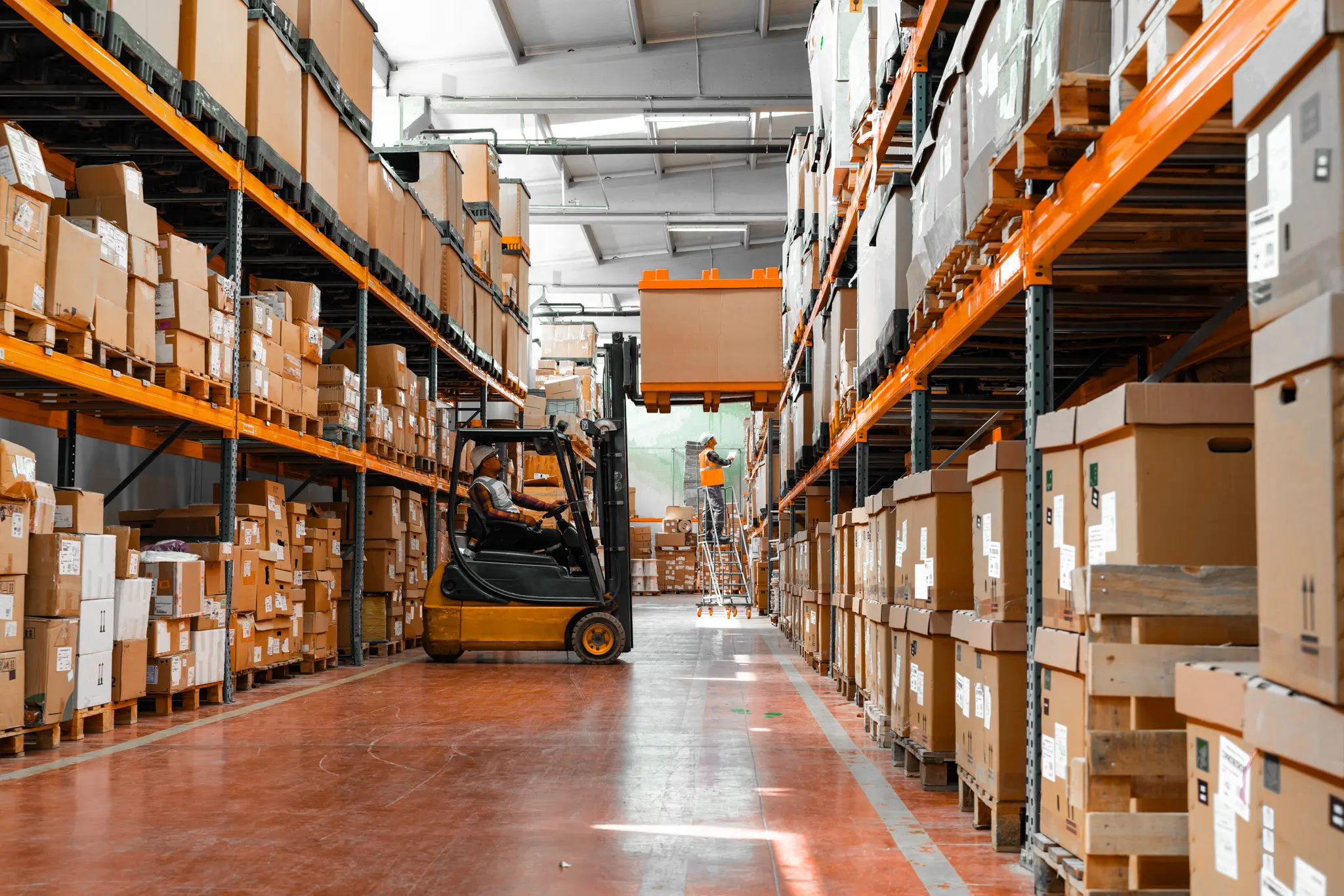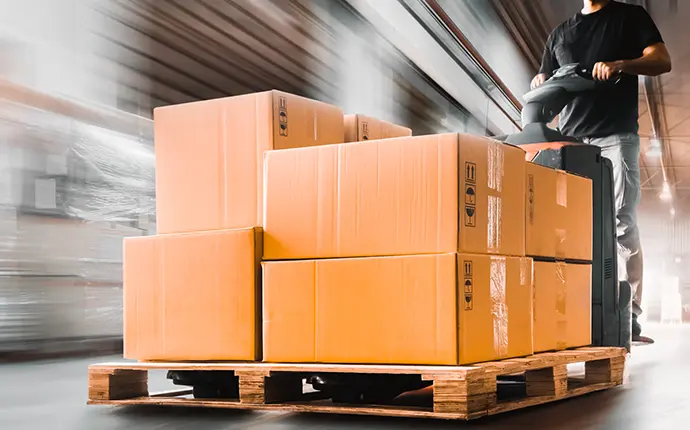In 2025, the shipping and delivery experience is often the only tangible point of contact between brands and their customers.
Meeting expectations at online checkout, in transit, and during unboxing has become essential to business success.
In fact, our research at Sifted shows that nearly half of consumers stop buying from a brand after experiencing poor delivery or packaging.
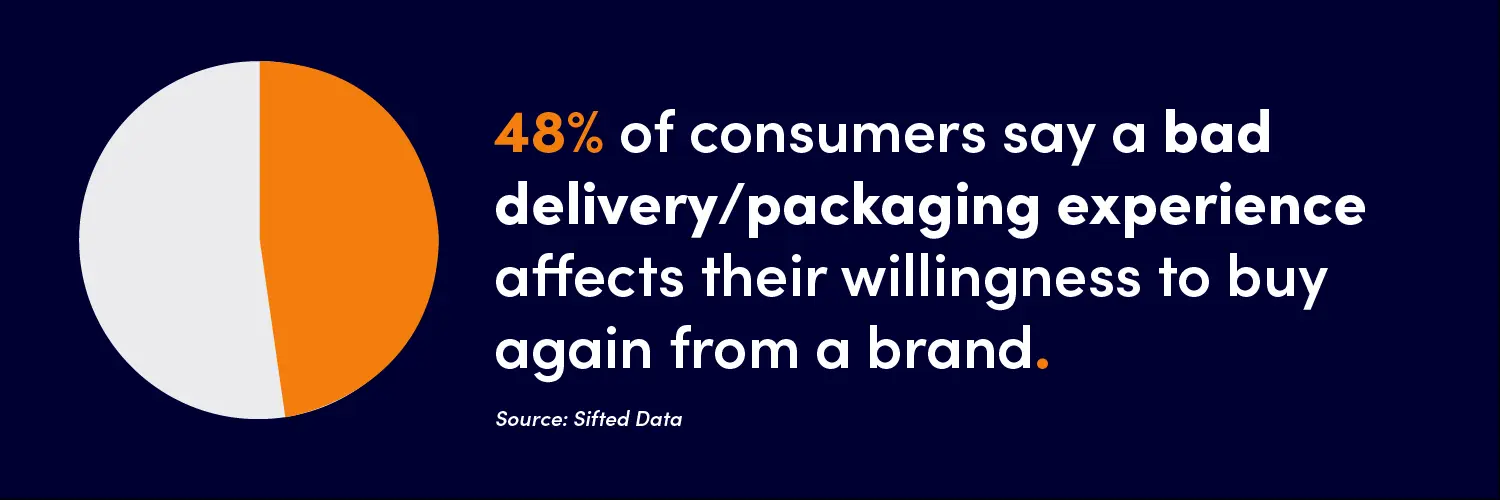
This means every late shipment, damaged box, or instance of excessive packaging isn’t just a cost issue; it’s a lost customer.
Building on surveys conducted in 2021, 2023, and 2024, Sifted asked 500 consumers across the U.S. about their priorities regarding delivery options, speed, packaging, and sustainability in 2025.
Most respondents receive 3-4 packages a month, giving them enough experience to form preferences and recognize the difference between a good delivery and a poor one.
This year’s survey highlights emerging consumer trends and offers practical strategies to drive repeat purchases, enhance operational efficiency, and help businesses balance customer expectations with cost management.
Consumers Want Shipping Options
Consumers increasingly expect flexible shipping options that allow them to control how their orders are delivered.
- 53% of consumers said that having multiple shipping choices—such as different delivery speeds, price tiers, or carriers—makes them more likely to complete a purchase.
- 36% said they like having these options, but they don’t significantly influence their decision to buy.
- 4% said they prefer fewer shipping options.
- 7% feel that having them makes no difference.

Overall, more than half of consumers are more likely to finalize a purchase when offered flexibility in shipping, showing that variation in speed, price, and carrier can directly boost purchases.
However, nearly half (47%) of shoppers don’t weigh these options as heavily in their decision-making, suggesting that businesses may benefit from offering only the most essential choices to avoid overwhelming customers.
In practice, this means striking a balance: providing enough variety to meet diverse customer needs, but keeping options streamlined and easy to understand. Too many choices can lead to “options fatigue,” which risks slowing down or even discouraging purchases.
Businesses that align their shipping option strategies with customer expectations, while avoiding the pitfalls of option overload, can improve customer satisfaction and increase orders.
Top Factors: Price, Speed, and Tracking Ability
Which shipping options matter most to shoppers?

Shipping Cost
90% of shoppers say lower shipping costs are at least somewhat important when deciding on a purchase. Within that group, 43% consider it very important.
Only 10% say shipping costs are not important at all.
For the vast majority of shoppers, delivery price plays a decisive role in whether they complete a purchase.
Fast Delivery
More than a third (37%) say fast delivery is what they value most. “Fast”, according to consumers, is defined as same-day, next-day, or 2-day delivery.
This indicates that a significant portion of consumers equate value with convenience and immediacy. Speed of fulfillment is not just a “nice-to-have” but a decision-driving factor.
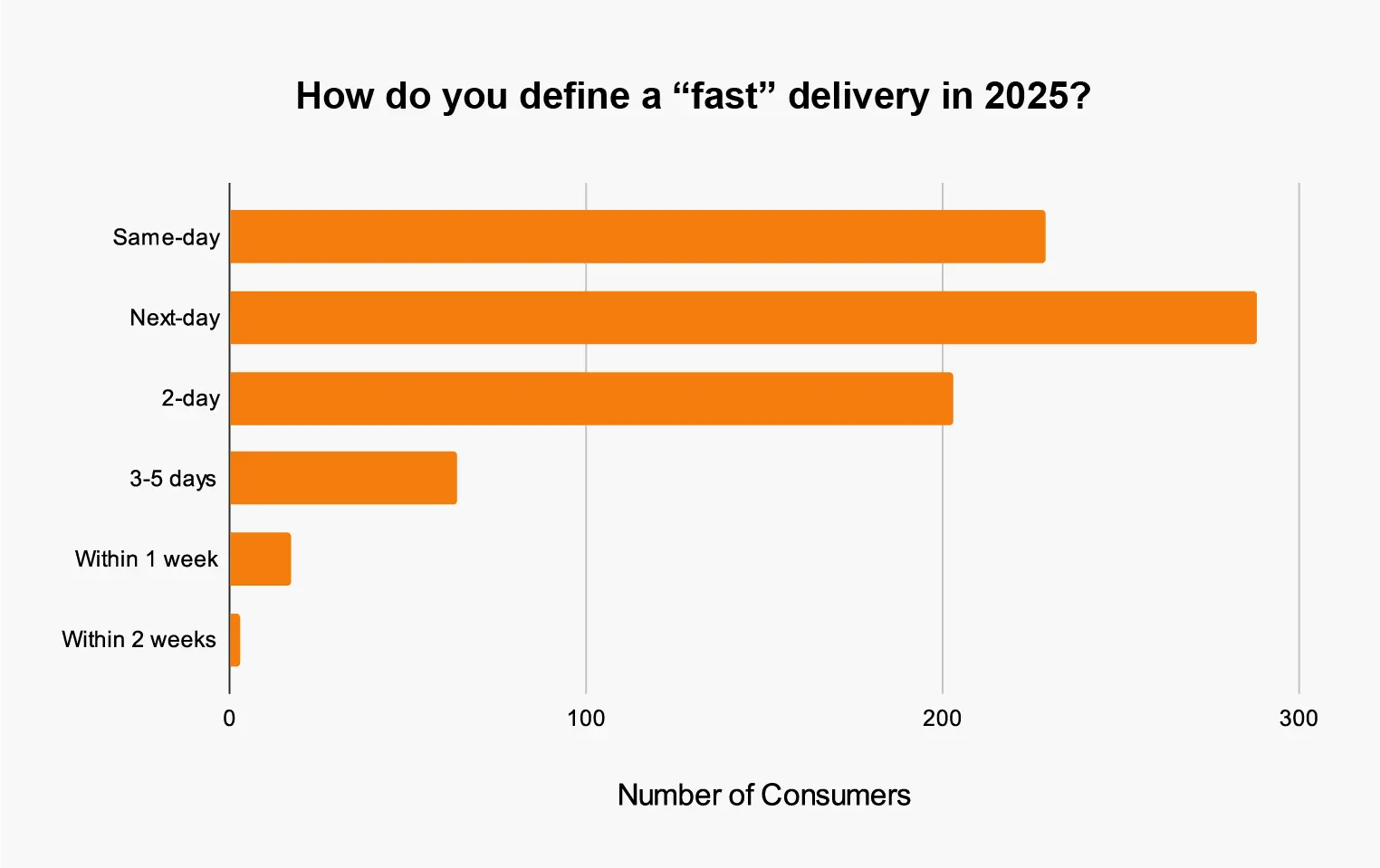
If a store offered the same item in-store and online at the same price, 52% of shoppers said they would wait up to two days for delivery, while 32% would choose to pick it up in-store, and 16% would wait longer than two days.
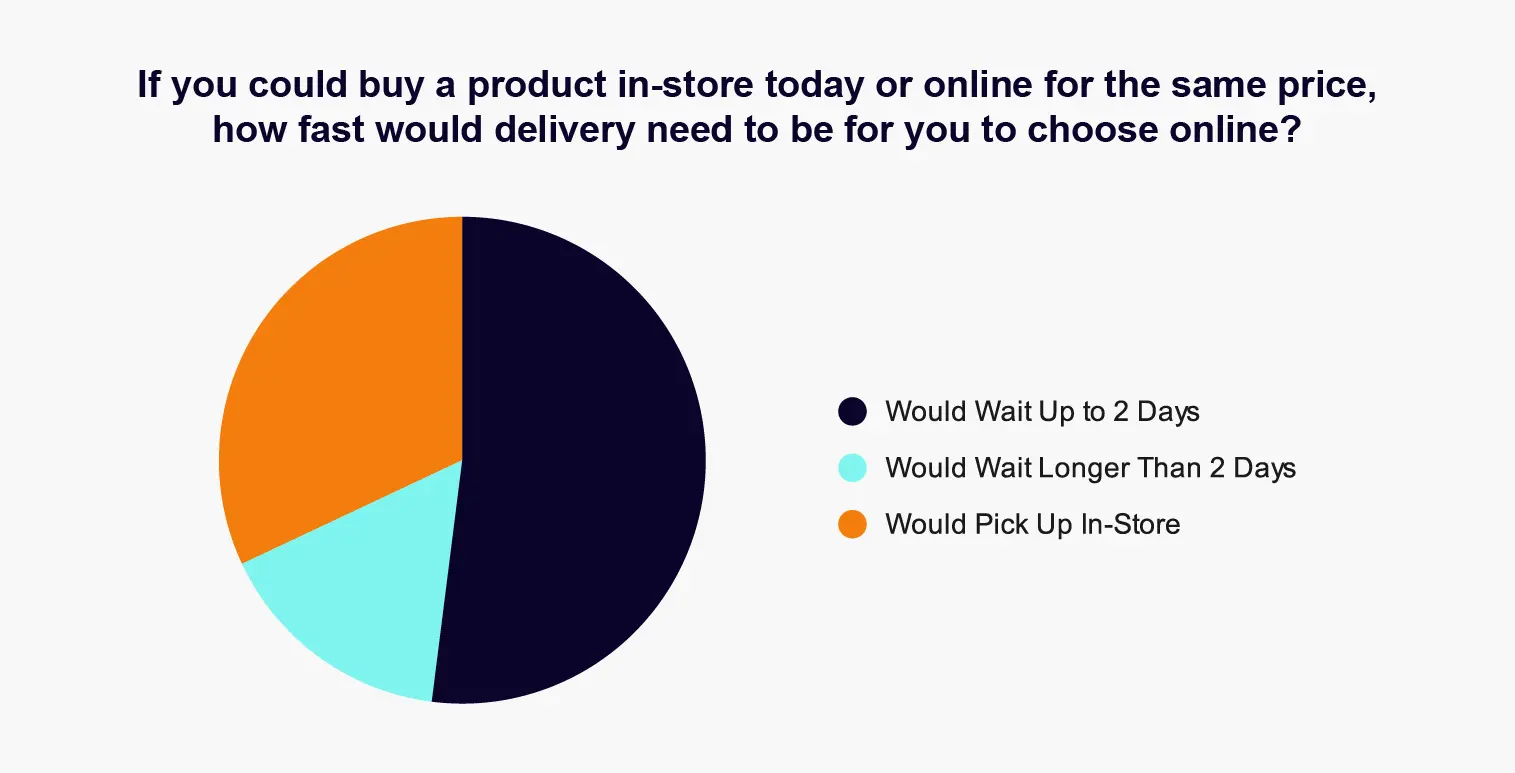
This shows that delivery is slightly more attractive than pickup when price is equal, but a significant portion still prefers the immediacy of in-store collection. To meet both preferences and avoid excluding customers, retailers should provide both options.
Tracking Ability
When it comes to tracking shipments, 63% of consumers consider full visibility throughout the delivery process to be essential. 32% say they like the option of tracking though it’s not necessary, and only 4.8% say they don’t notice or care at all.
Consumers increasingly expect real-time visibility into their orders, including accurate updates on location and delivery timelines. Providing transparent tracking not only strengthens customer trust but also reduces the volume of “where is my order?” inquiries, ultimately enhancing the shopping experience while improving operational efficiency for businesses.
Sustainability
Sustainability remains a key consideration for consumers, with 82% indicating that eco-friendly options are at least somewhat important when choosing products.
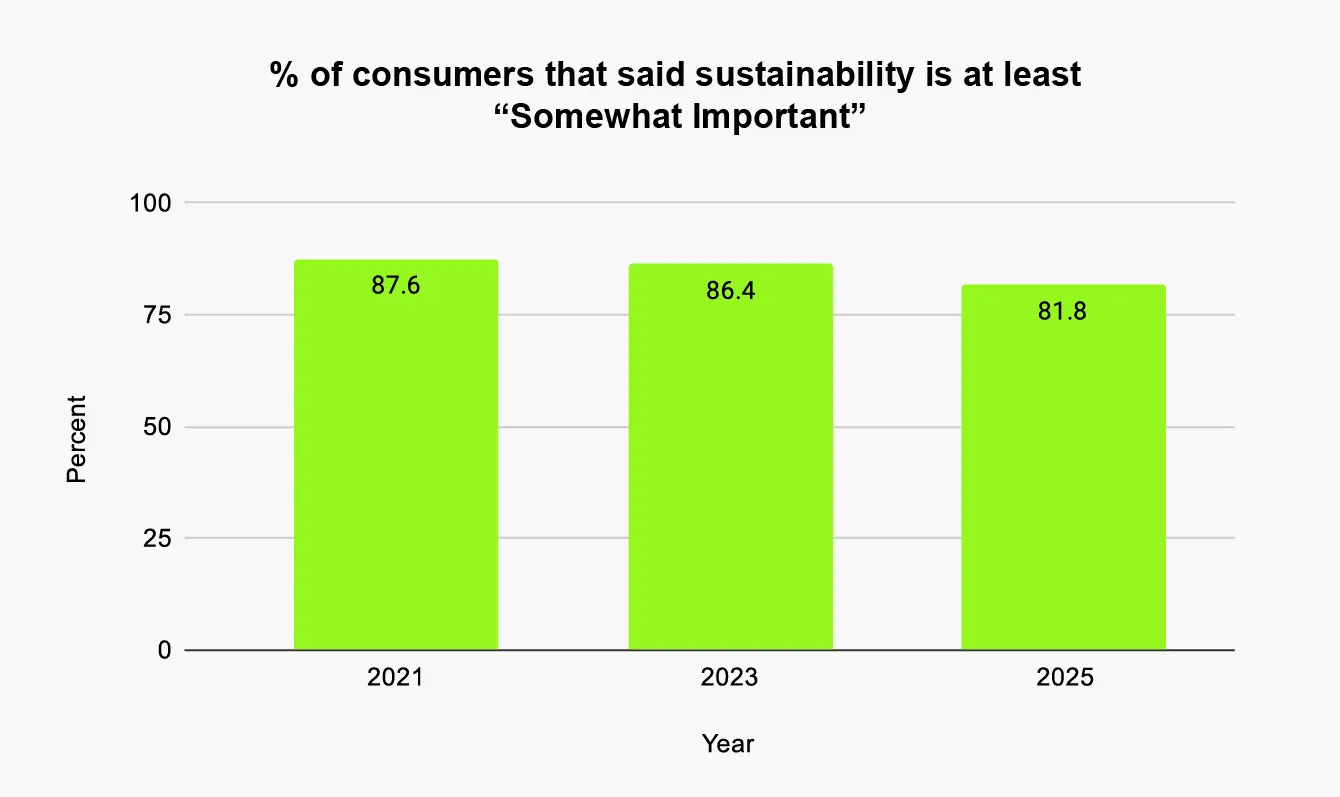
In line with previous years, many shoppers are willing to adjust delivery timelines for greener options. 36% say they would wait an extra day, and 20% would wait two days for eco-friendly shipping.
When asked about offering sustainable delivery at checkout, even at a higher cost, 72% supported the idea, and 32% said they would often choose this option.

68% agree that most companies use excessive packaging, highlighting concerns about waste and environmental impact, and suggesting a growing preference for more sustainable and minimal packaging practices.

While sustainability remains an important consideration for consumers, the evidence shows that price sensitivity and tracking visibility are driving purchase behaviors more in 2025.
Positive Delivery Experience = Repeat Business
In 2025, 76% of shoppers said a positive delivery experience influenced their decision to repurchase from a brand, up from 72% in 2024.

Delivery performance can make or break customer relationships. A poor execution undermines trust and loyalty, while a strong performance drives repeat purchases and strengthens brand equity.
Today, it’s no longer just about getting the package to the doorstep—it’s about the experience of the customer, and whether or not your delivery meets their expectations.
Best Practices + Strategies for Success
In this survey, we found that:
- Consumers value having multiple shipping options.
- Sustainability remains important, but factors like price and tracking visibility have a stronger influence on purchasing decisions.
- A positive delivery experience is critical for driving repeat business.
To help businesses meet these expectations, Sifted experts outlined the best practices and strategies you can put into action for long-term success.
Offer Delivery Options without Overwhelming Customers
Offering delivery options begins with understanding your customer personas:
Some shoppers value speed, others prioritize cost savings, and many look for eco-friendly choices. To keep the experience simple, limit selections to a few clear tiers, such as Standard, Express, and Eco. User-friendly shopping cart designs, like smart defaults or progressive disclosure, can further reduce friction by suggesting the best option based on urgency, basket size, or order history while still allowing flexibility.
Every option should also align with your operational capabilities:
That means relying on services you can consistently support and considering low-fee alternatives like parcel lockers, deferred shipping, UPS Ground Saver, FedEx Ground Economy, USPS Ground Advantage, or Amazon programs. Optimizing fulfillment by SKU and origin can unlock regional shipping models that balance speed and cost.
Just as important is communication:
Explain tradeoffs clearly so customers understand what they’re choosing—whether it’s “fastest arrival but with a fee” or “a slower option that reduces packaging and carbon emissions.”
Finally, treat delivery choice as an ongoing experiment:
Measure outcomes, test variations, and refine until you’ve identified the fewest, most effective options that serve your diverse customer needs without overcomplicating the checkout process.
Minimize Packing Waste
Minimizing packaging waste benefits both the customer experience and your bottom line, while also supporting sustainability goals:
- Consider using recyclable or compostable materials that are easy for customers to dispose of responsibly.
- Right-sizing packages is important to reduce excess void fill and eliminate the frustration of oversized boxes for small items.
- Packaging minimization—like removing unnecessary layers, inserts, or plastics—can cut costs and waste simultaneously.
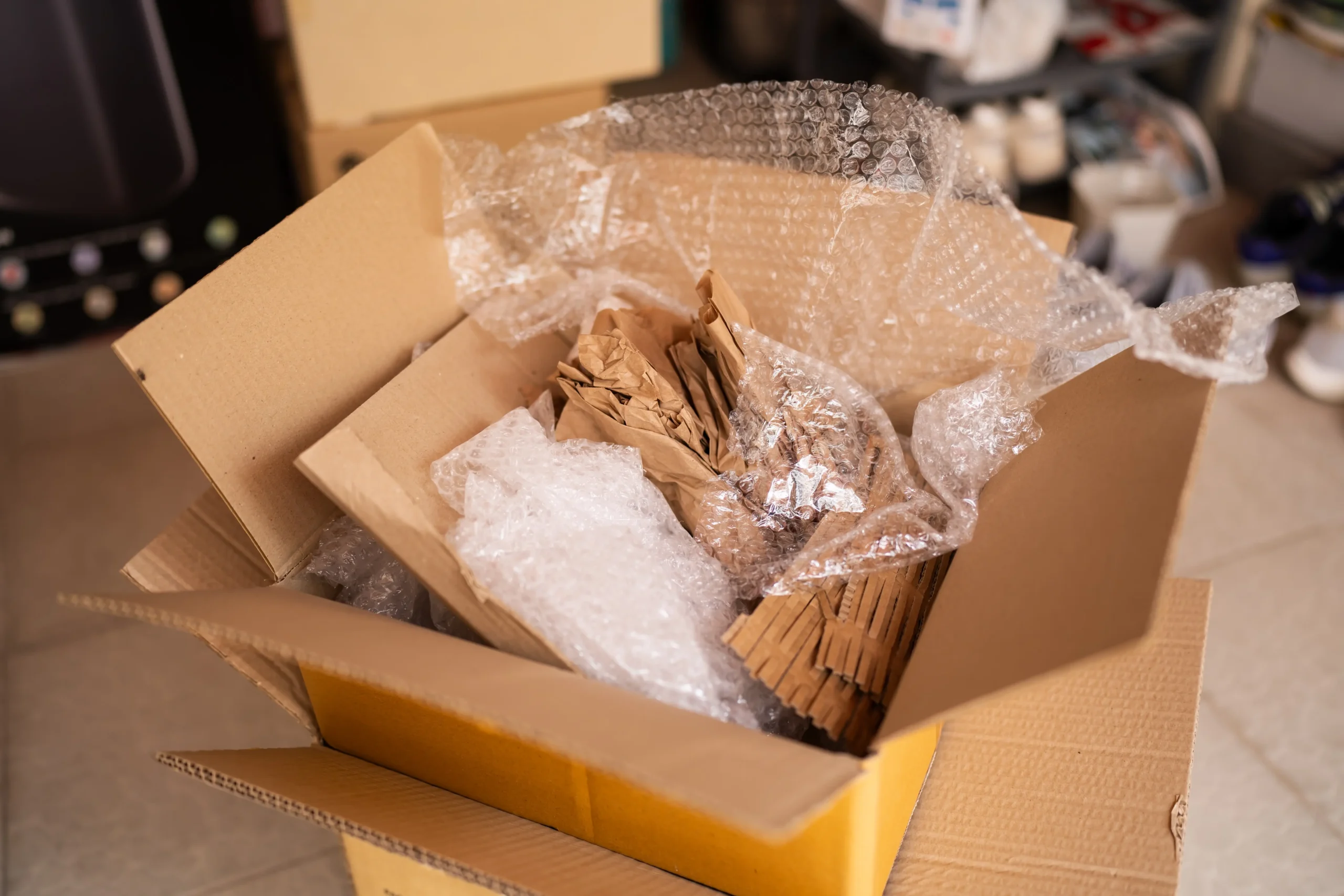
Operational practices also play a big role:
- Optimizing shipping methods, such as consolidating orders or reducing split shipments, lowers the total amount of packaging needed.
- Careful product handling helps prevent damage, which in turn reduces the need for repackaging and returns.
- Finally, innovative packaging solutions—such as reusable mailers, plant-based materials, or modular designs—can enhance sustainability while differentiating your brand in the eyes of environmentally conscious customers.
Optimize Delivery Networks
Optimizing delivery networks is key to expanding two-day ground coverage:
Staying competitive on speed without relying heavily on air requires careful service level optimization. Converting certain 1–2 day air shipments into lower-cost ground options and shifting to PM delivery windows where AM arrival isn’t necessary can reduce expenses while maintaining customer expectations.
Smarter network design also drives efficiency:
Using hub-and-spoke layouts with flexible, dynamic hub usage allows parcels to move through the network faster. Partnering with local distribution centers, regional carriers, and 3PL providers can further expand reach and coverage without overextending internal resources.

Technology adds another layer of advantage:
Real-time analytics, predictive routing, and demand forecasting can guide smarter decisions, while automation in sorting, picking, and packing streamlines operations and accelerates fulfillment. Together, these strategies enable shippers to offer faster delivery at lower cost while building a more resilient network.
SiftedAI Can Help
Keeping up with ever-evolving consumer expectations can feel overwhelming, let alone trying to exceed them. SiftedAI makes it possible.
Power Operations with Data, Alerts, and Automation
SiftedAI acts as an always-on logistics intelligence layer. It captures granular parcel data across carriers and platforms and normalizes it for clear visibility, not just in dashboards, but via real-time alerts when surcharges spike or savings opportunities arise.

Accounting Automation powers your financial workflow—carrier bill pay, GL coding, claims filing, audit recovery—so your team can focus on strategy rather than chasing errors.
With Reporting Studio and Scenario Modeling, you gain predictive analytics tools to forecast cost changes, test network or packaging shifts, and stay agile while planning for the future

Exceeding customer demands is no longer out of reach. With SiftedAI, you can offer smarter shipping options, reduce unnecessary packaging, cut costs, and maintain fast, reliable delivery.
See the difference SiftedAI can make in your parcel operations—get your free demo today.
Our 2025 Consumer Survey is also available for download in eBook form!
